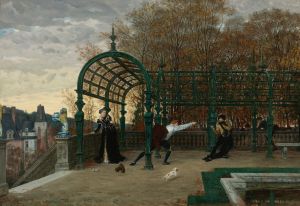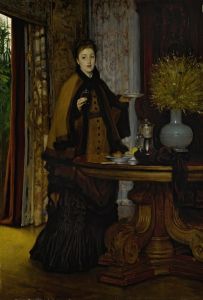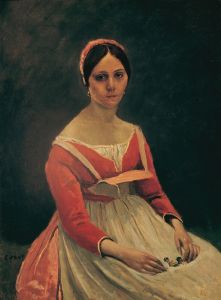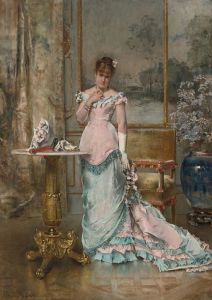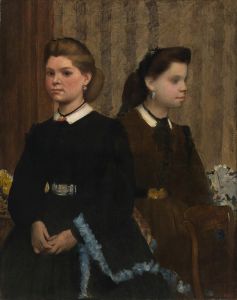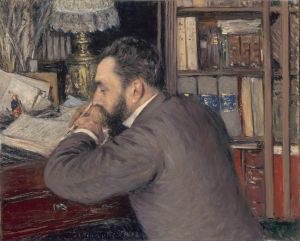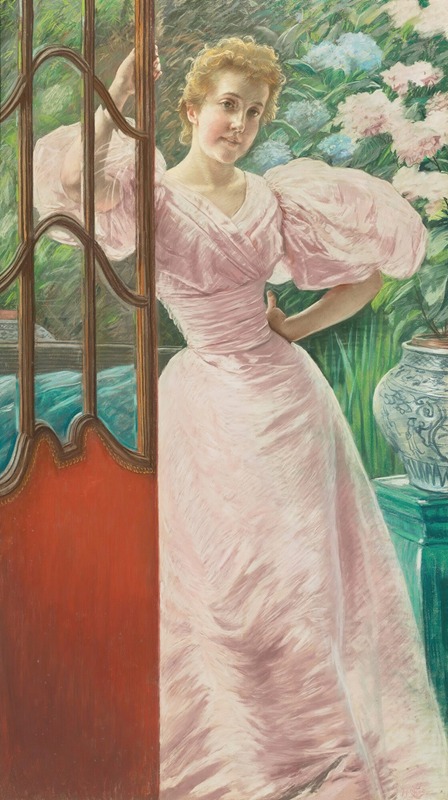
Portrait Of A Young Woman In A Conservatory
A hand-painted replica of James Tissot’s masterpiece Portrait Of A Young Woman In A Conservatory, meticulously crafted by professional artists to capture the true essence of the original. Each piece is created with museum-quality canvas and rare mineral pigments, carefully painted by experienced artists with delicate brushstrokes and rich, layered colors to perfectly recreate the texture of the original artwork. Unlike machine-printed reproductions, this hand-painted version brings the painting to life, infused with the artist’s emotions and skill in every stroke. Whether for personal collection or home decoration, it instantly elevates the artistic atmosphere of any space.
"Portrait of a Young Woman in a Conservatory" is a painting by the French artist James Tissot, created in the late 19th century. James Tissot, born Jacques Joseph Tissot on October 15, 1836, in Nantes, France, was a prominent painter known for his detailed and fashionable depictions of contemporary life. He was particularly recognized for his ability to capture the elegance and style of the Victorian era.
The painting "Portrait of a Young Woman in a Conservatory" exemplifies Tissot's skill in portraying the intricate details of clothing and interior settings, which were hallmarks of his work. Tissot often painted scenes that reflected the leisure activities and social customs of the upper middle class, and this painting is no exception. It features a young woman seated in a conservatory, a type of room that was popular in the 19th century for its use as a sunlit space filled with plants and often used for relaxation and social gatherings.
In this work, Tissot demonstrates his mastery of light and shadow, capturing the way sunlight filters through the glass of the conservatory and illuminates the scene. The young woman is depicted in a fashionable dress of the period, with attention paid to the textures and patterns of the fabric. Her pose and expression suggest a moment of contemplation or leisure, characteristic of Tissot's interest in the subtleties of human emotion and social interaction.
Tissot's use of color and composition in this painting reflects his background and training. He studied at the École des Beaux-Arts in Paris and was influenced by both the academic traditions of the time and the emerging Impressionist movement. Although he never fully embraced Impressionism, Tissot's work often incorporated elements of its style, such as the use of light and color to convey mood and atmosphere.
Throughout his career, Tissot's work was well-received, and he enjoyed considerable success both in France and England. After the Franco-Prussian War, he moved to London, where he became a popular society painter. His works from this period often depict the fashionable life of the British upper class, and he became known for his portraits and genre scenes that captured the essence of the era.
"Portrait of a Young Woman in a Conservatory" is a testament to Tissot's ability to blend realism with a sense of narrative, inviting viewers to imagine the story behind the scene. The painting is part of a broader body of work that offers insight into the social dynamics and cultural norms of the late 19th century.
Today, James Tissot's paintings are held in high regard and can be found in major museums and private collections around the world. His work continues to be studied for its technical proficiency and its reflection of the social and cultural milieu of his time.





